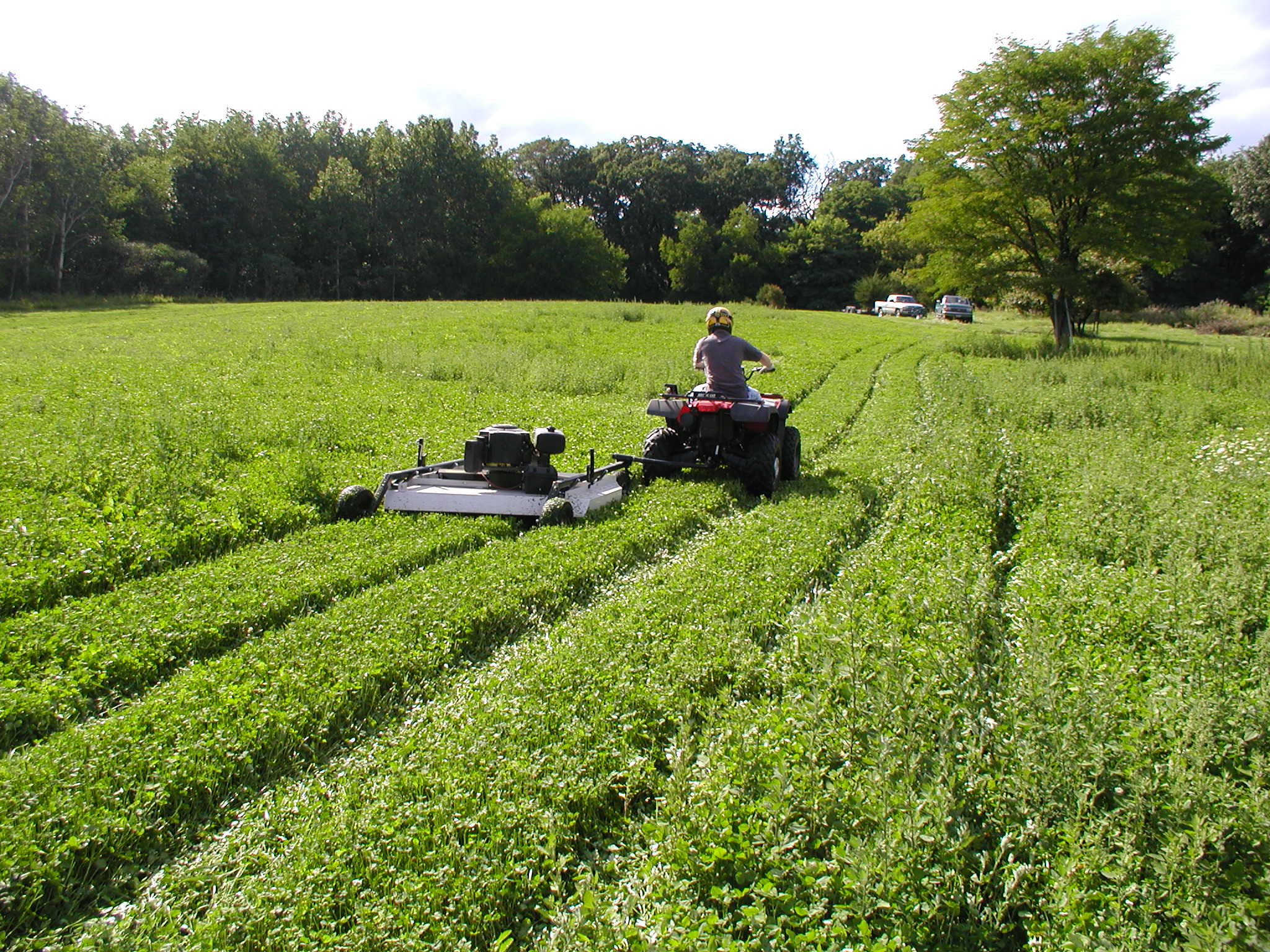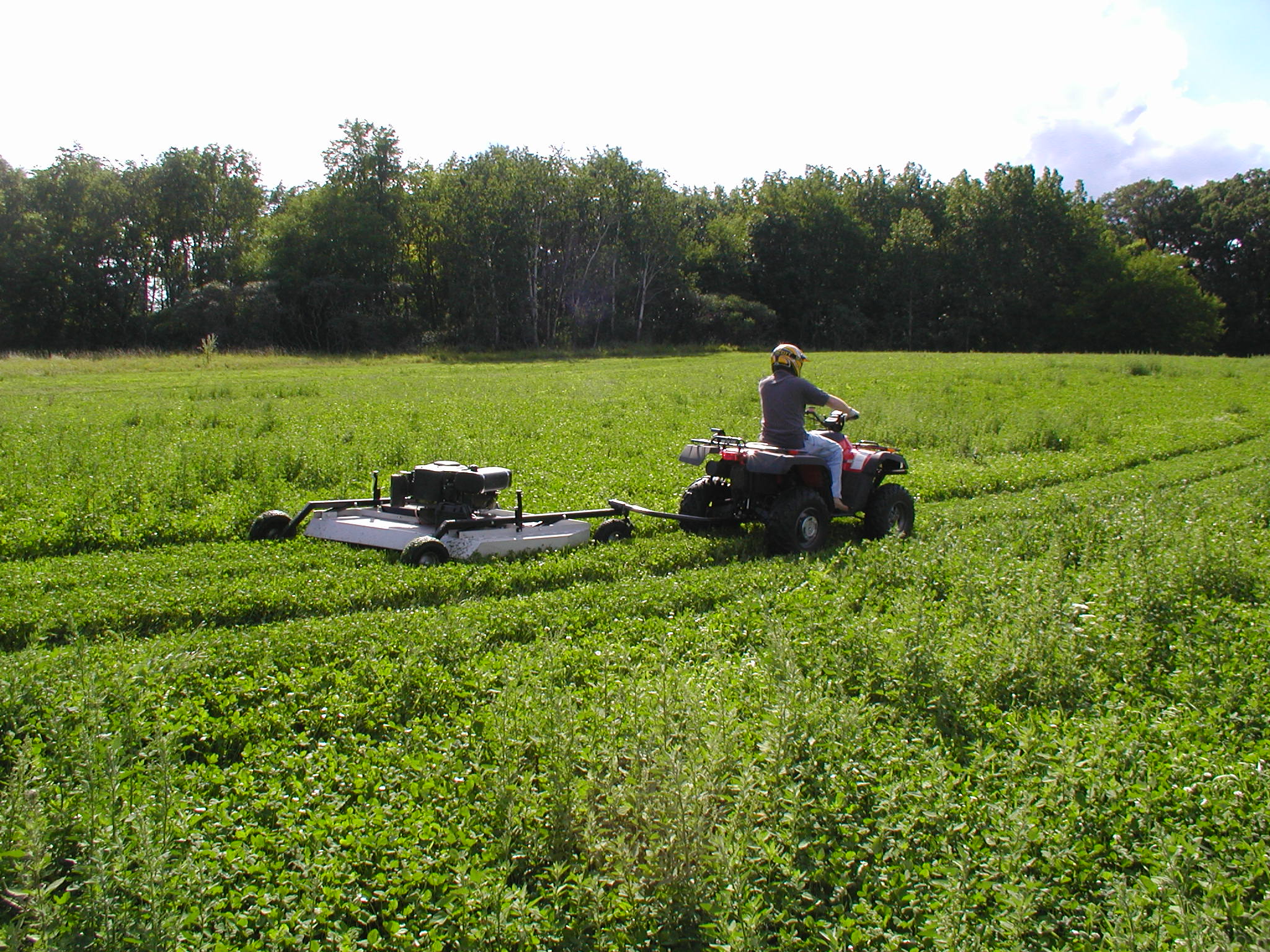Perennial Forge Maintenance - Tips on Mowing

Whitetail Institute recommends mowing all Whitetail Institute perennials a couple of times in the spring and maybe (very optional!) again one more time in early fall as part of stand maintenance. There are numerous benefits. To realize these benefits, though, mowing must be timed and done properly.
One reason for mowing is to keep the forage stand as thick, lush and healthy as possible so that it stays highly attractive and highly nutritious, and so that ‘’bare spaces’’ (which encourage weed growth) are minimized. Some forage types such as clover actually thicken up at the lower levels of the plants if they’re mowed properly. Other types of plants such as forbs don’t do that.
All Whitetail Institute perennials benefit from mowing for additional reasons. For one, mowing prevents the huge expense of energy and nutrients it takes for plants to flower. Proper mowing to prevent or stop that process keeps all that energy and nutrients in the plants. Mowing is also an important part of weed control. Many of the weeds we face in our food plots are upright annual weeds, which rely on flowering and reseeding to maintain their presence in our plots. Mowing to prevent the seeds in weed/grass flowers and seed heads from drying and becoming viable can break that process. (Giant ragweed is an example of a very common weed that’s very susceptible to mowing.)
“Proper” Mowing: Mowing should be timed and performed properly to provide the benefits I’ve mentioned. Mow whenever you see anything in the plot (the forage plants, weeds, or grasses) starting to flower or put on seed heads. Your goal is to mow low enough to remove all flowers/seed heads from the weeds before they dry (at which point the seeds in them become viable), but not so low that you take more than a couple of inches off the forage plants.

1. Don’t take off more than a couple of inches off the forage plants at a time! Just shave the top off the plot just enough to take off most (not necessarily all) the flowers off the forage plants.
2. Don’t mow the forage plants lower than about 6-8 inches, and allow them to recover from mowing before mowing again - taking too much foliage isn’t good for them, and it can also speed up evaporation of moisture from the soil.
3. Don’t mow the forage plants when they’re stressed (for example don’t mow them during times of excessive heat and/or drought)
4. Don’t mow the forage plants within a week or two of applying herbicides.
